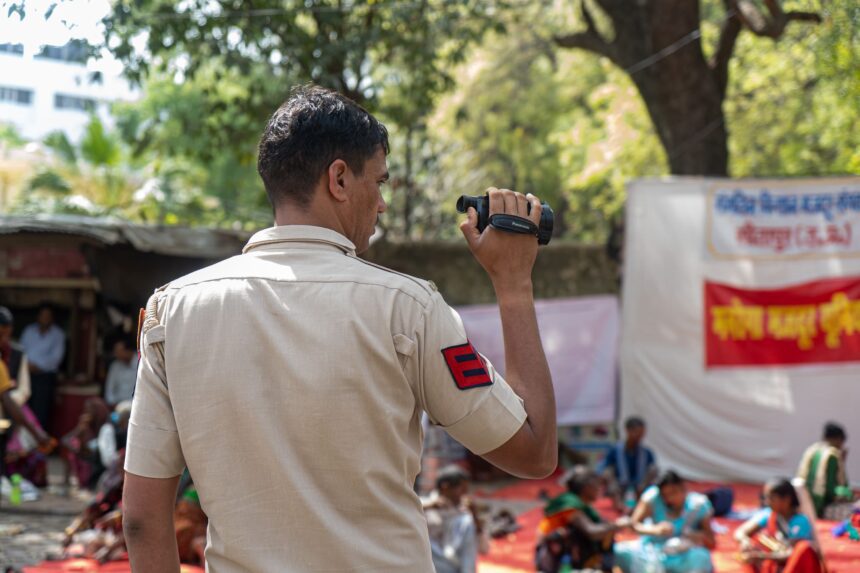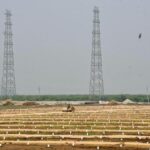I grew up in a town that experienced episodes of xenophobic unrest during my teenage years. My parents discouraged me from participating in movements advocating for social justice, citing concerns about potential repercussions: “What if someone took your photo and posted it on Facebook? Do you want to invite trouble?” Their reasoning resonated with me, and I steered clear of such gatherings.
Recently, news about India’s “AI-powered smart cities” has resurfaced those memories with heightened urgency. These developments involve thousands of networked cameras monitoring public spaces, equipped with algorithms capable of facial recognition, body tracking, and identification of “unusual” behavior. As a child, I could rely on my parents to shield me from scrutiny. Now, as an adult, I grapple with whether I truly possess agency in this AI-enabled landscape. Has the anxiety dispersed, or has it merely evolved? What implications does life in an AI-powered smart city hold for Muslims today?
The Rise of the Watchful City
In recent years, India has significantly ramped up its use of AI-driven surveillance through its Smart Cities Mission. Local governments are installing thousands of CCTV cameras, integrating them into centralized command systems. The stated goal is to enhance public safety and city management. Unlike traditional surveillance, these cameras analyze video streams in real time, capable of counting crowds and matching faces against police watchlists instantaneously.
Cities such as Mumbai, Delhi, Hyderabad, and Guwahati have adopted this technology, with Hyderabad reporting up to a 30% decrease in street crime following the deployment of smart cameras. These devices are strategically placed not only at busy intersections but also deployed for crowd control during large festivals like Navratri, Durga Puja, and the Maha Kumbh Mela.
Although advocates tout smart cities as efficient and secure, concerns linger. Many Indians find concepts like “privacy” and “surveillance” abstract. The allure of a “safe” city—with improved lane discipline, quicker emergency responses, and reduced stampedes—is palpable. As someone with family and friends, I empathize with the instinct to accept this trade-off. Who wouldn’t be inclined to sacrifice some anonymity for enhanced safety?
Yet, a troubling question persists: Will these AI cameras treat me the same as my Hindu neighbors? Will I be flagged as a potential “mob” or “sensitive gathering” if I wear traditional Muslim attire or assemble with friends outside a mosque? If I attend a peaceful protest, will my presence be recorded and analyzed? The premise of safety intertwines with a fear of surveillance—a sensation that being a Muslim in public subjects me to invasive watching. This anxiety resonates with many from marginalized communities, who fear these technologies could serve as instruments for over-policing rather than mere public safety assessments.
This worry is compounded by a pre-existing culture of social surveillance. In commodity-driven gated communities, every move can be mediated by third-party applications requiring permission for entry by delivery workers or acquaintances. Women often face scrutiny from family, while residents of cities like Delhi navigate strategically placed gates, often erected illegally under the banner of security. Random stops and searches by police in places like Hyderabad and Bengaluru contribute to a supportive environment for invasive monitoring. In a nation where housing discrimination based on faith is not uncommon, the risks associated with these new surveillance technologies are all the more pronounced.
Life Under the Gaze of Artificial Eyes
Navigating an AI-driven smart city as a Muslim can feel precarious. Observing the array of CCTV cameras above me, I ponder whether AI is tracking my movements. If I linger with friends at a market, will we be flagged as “loitering”? Attending a protest or large religious gathering raises further concerns: Will I be recorded and added to a database as a “person of interest”?
Surveillance technology extends beyond facial recognition. Recent legal proceedings in an EU country have acknowledged gait recognition, distinguishing individuals by their manner of walking—an analysis that contributed to solving a murder case.
In India, particularly after the communal riots in northeast Delhi in 2020, law enforcement extensively employed facial recognition technology (FRT) to identify suspects, claiming over 750 cases were solved. According to their report, more than 1,900 individuals—73% of those arrested—were identified via automated facial matching, often lacking corroborating evidence. A study in 2021 from the Vidhi Centre for Legal Policy noted that facial recognition practices in Delhi disproportionately impact Muslims, given the historical context of over-policing in their neighborhoods.
Law enforcement characterized their use of technology for identification and arrests as a hallmark of effective policing. However, for those targeted, this approach feels more like a dire warning. The case of Mohammad Shahid from Jaffrabad illustrates this point: he spent 17 months in jail after facial recognition software alleged his involvement in the violence. Despite his claims of innocence, the algorithm’s findings held sway over his fate, showcasing the dangers of high-tech policing overriding justice.
In Hyderabad, one of the world’s most surveilled cities, law enforcement has utilized handheld devices to randomly photograph individuals for facial recognition checks. An incident involving activist S.Q. Masood, who was stopped by police during a lockdown, highlights these concerns; he was forced to remove his mask for a photo despite his objections.
Marginalized communities bear the brunt of this surveillance, as highlighted by activist Srinivas Kodali, who has voiced concerns about automated traffic systems that disproportionately penalize gig workers. While this acknowledgment has found its way into political promises, it does little to challenge the systemic nature of surveillance—a tool that any new government is more likely to wield than dismantle.
Recent uprisings reinforce the unrestrained use of facial recognition by law enforcement. Following a protest in Uttarakhand’s Kashipur that turned violent, reports indicate that police used facial recognition to identify participants, asserting the event lacked proper permission. The demolition of alleged illegal structures illustrates a grim reality of collective punishment, exposing a disregard for due process.
Reflecting on how my parents worried about a simple photograph on Facebook, the stakes have magnified drastically. The fear now is not of individual judgment, but rather of millions of data points scrutinized by an invisible algorithmic gaze. The installation of AI cameras at Durga Puja celebrations provokes dismay; in a nation already marked by segregation at various levels, the fine line between crowd control and targeted discrimination feels increasingly perilous. The supposed trade-off of anonymity for safety has become fraught, revealing that for some, it was never a fair bargain.
Kalim Ahmed is a columnist and open-source researcher focusing on technology, meme culture, and disinformation.
Tags: surveillance, smart city, safety, suspicion, India
Hashtags: #Surveillance #safety #suspicion #Navigating #Indias #smartcity #future #Muslim










